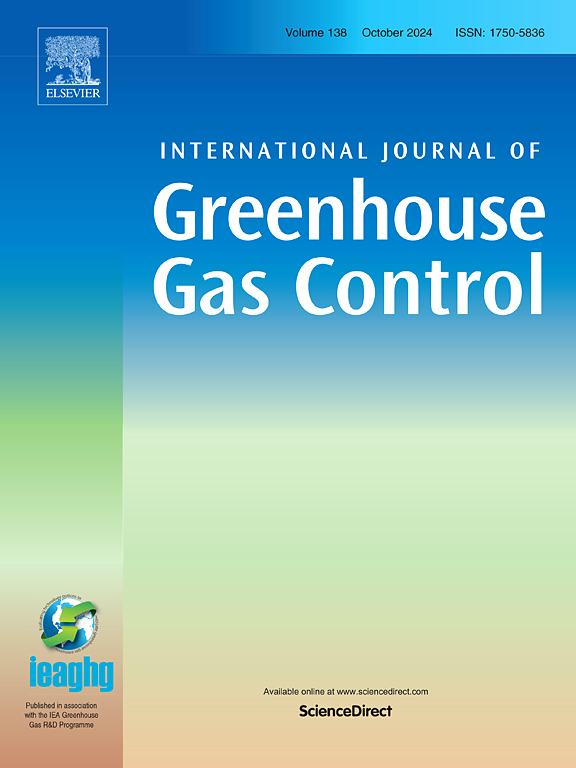A Coupled Well-Reservoir Model to Quantify CO2 Release Rates and Temperatures during Well Blowouts in Geologic Carbon Storage
IF 5.2
3区 工程技术
Q2 ENERGY & FUELS
International Journal of Greenhouse Gas Control
Pub Date : 2025-07-01
DOI:10.1016/j.ijggc.2025.104373
引用次数: 0
Abstract
Modern wells are designed for safe and efficient transport of fluids. CO2 injection wells are managed through engineering best practice such that acute releases of fluids are exceedingly rare. However, stakeholders have interest to understand the scale and dynamics of such low probability events to better inform investment and insurance decision making. Here we present a physics-based well-reservoir model to simulate transient acute release of CO2 from injection wells through an unconfined bore-hole. The developed well model captures supercritical–liquid–gas–solid phase transitions of CO2 during rapid depressurization. We applied this model to study the CO2 flow rates and well-head cooling from an onshore injection well in a deep saline aquifer. For a hypothetical well undergoing two-week long release after 1 year of injection at a rate of MT/year, we observed up to tons of total CO2 released. A near-triple-point temperature of −58°C was observed at the wellhead. Our simulations show the CO2 flow rate to be sensitive to the reservoir permeability. With the developed model as a reference, we investigate various simplifications to speed up computations. The heat transfer between the well-bore and surrounding rocks is shown to have insignificant impact on the flow rate over two weeks, and is therefore be neglected in the simplified model. We use simulations to demonstrate the validity of a quasi-steady flow assumption inside the well. The proposed simplifications are shown to significantly speed up computations of acute CO2 release.
地质储碳井井喷过程中CO2释放速率和温度的耦合井储模型
现代油井的设计是为了安全、高效地输送流体。二氧化碳注入井通过最佳工程实践进行管理,因此流体的急性释放极为罕见。然而,利益相关者有兴趣了解这种低概率事件的规模和动态,以便更好地为投资和保险决策提供信息。在这里,我们提出了一个基于物理的井-储层模型来模拟注入井通过无侧限井眼的瞬态急性二氧化碳释放。开发的井模型捕获了快速降压过程中CO2的超临界-液-气-固相变。我们将该模型应用于研究深盐水含水层陆上注入井的二氧化碳流速和井口冷却。对于一口假设井,在以每年0.25 MT的速度注入1年后,进行了为期两周的释放,我们观察到总共释放了48000吨二氧化碳。在井口观察到- 58°C的近三点温度。模拟结果表明,CO2流速对储层渗透率非常敏感。以已建立的模型为参考,我们研究了各种简化方法以加快计算速度。井筒与围岩之间的换热对两周内的流量影响不大,因此在简化模型中可以忽略。通过模拟验证了井内准稳态流动假设的有效性。所提出的简化表明,大大加快了计算急性CO2释放。
本文章由计算机程序翻译,如有差异,请以英文原文为准。
求助全文
约1分钟内获得全文
求助全文
来源期刊
CiteScore
9.20
自引率
10.30%
发文量
199
审稿时长
4.8 months
期刊介绍:
The International Journal of Greenhouse Gas Control is a peer reviewed journal focusing on scientific and engineering developments in greenhouse gas control through capture and storage at large stationary emitters in the power sector and in other major resource, manufacturing and production industries. The Journal covers all greenhouse gas emissions within the power and industrial sectors, and comprises both technical and non-technical related literature in one volume. Original research, review and comments papers are included.

 求助内容:
求助内容: 应助结果提醒方式:
应助结果提醒方式:


